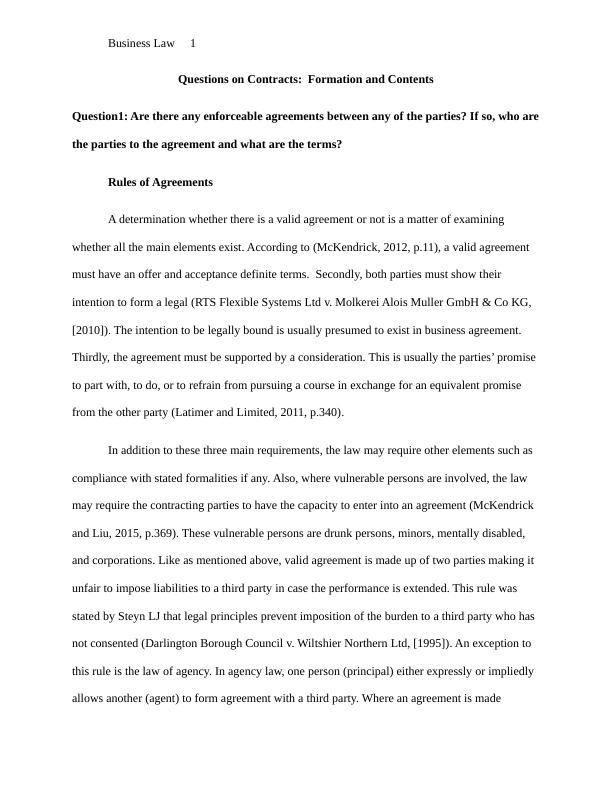Questions on Contracts: Formation and Contents
Case study on Karacal Kitchens involving legal issues in business and corporate law.
9 Pages1793 Words169 Views
Added on 2023-04-11
About This Document
This document discusses the rules and application of agreements in business law, including the elements of a valid agreement and the capacity to enter into an agreement. It also explores the rules relating to contracts with minors and the concept of privity of contract. The document provides examples and case law to illustrate the application of these rules.
Questions on Contracts: Formation and Contents
Case study on Karacal Kitchens involving legal issues in business and corporate law.
Added on 2023-04-11
ShareRelated Documents
End of preview
Want to access all the pages? Upload your documents or become a member.
Ingredients of a Contract
|8
|2666
|84
Business and Corporate Law
|8
|1795
|30
Validity of Letter of Comfort and Use of Confidential Information by Directors
|11
|2311
|351
Contract Law Issue - Assignment
|6
|963
|73
Business Law Analysis Report
|10
|2637
|321
Business Law Assignment
|9
|1919
|166



